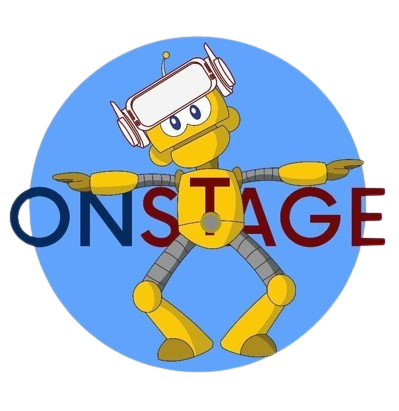How to Decide on Your OnStage Robotic Features#
Introduction#
Welcome to the world of OnStage robotic performances! This document demonstrates how to prepare for RoboCupJunior OnStage competition, specifically focusing on how to select the top features to highlight in your Poster and Technical demonstration video. Imagine you have a performance with a robotic dog (like the yellow robotic dog from Boston Dynamics) that interacts with humans. Here’s a guide on how to choose the top robotic features to amaze the judges and the audience alike.
Understanding Robotic Features#
Firstly, let’s clarify what constitutes a “feature” in an OnStage robotic performance. Features are the capabilities of your robots that can be clearly showcased in your performance. These are not just the technical components or sensors, but the actions your robots can perform.
A feature is something your robot can do because of its design, programming, or the use of sensors. So for your performance with your robotic dog, how would you go about choosing your features?
Examples of What Your Robots Can Do#
Move in various styles such as dancing, trotting, running, and walking on different surfaces
Pick up objects with an arm or mouth acting as a gripper
Avoid obstacles like objects, humans, and other robots
Balance and stand up on two legs
Navigate autonomously without human intervention
Detect and recognize people, objects, sounds
Turning Actions into Features#
Here are some cool ways to show what your robots can do:
Good Features |
Bad Features |
|---|---|
Dancing Together: The robot dogs dance in sync by recognizing the change in the music or beats |
Sound recognition |
Avoiding Collisions: The robots avoid each other while moving |
Ultrasonic sensor (for collision avoidance) |
Personal Tricks: Each robot recognizes different people and performs a unique trick for them |
Camera (for face recognition) |
Listening to Voice Commands: They change movements depending on voice commands |
Voice recognition |
Following Gestures / Movements: They perform different actions in response to hand signals or body movements |
Gesture recognition |
Moving Objects: They can pick up and move objects to specific places |
Gripper |
How to Choose Your Features#
When deciding which features to show, think about:
Features that judges can easily observe: Choose features that are clearly visible during the performance - if the judges cannot see your feature in action, you cannot be scored
Your Best Work: Pick features you are most proud of
What do you want to highlight: Choose features that you want to showcase in your performance
Presenting Your Features#
Highlight them by showing and explaining them in your technical demonstration video, poster, and interview. This makes your performance stand out and helps the audience and judges look out for your features in action!
What to Avoid#
Don’t focus on things like:
Just explaining / naming a sensor (like “a light sensor”)
A simple algorithm
Basic parts (like “omni-wheels” or “lego”)
Communication methods (like “Bluetooth”)
Just using broader terms without a detailed explanation of the function / technology (like “vision recognition”)
Conclusion#
Selecting the right features for your robots in an OnStage performance involves understanding their capabilities, transforming these into features that get people’s attention, and focusing on what you can use to best demonstrate your robotic performance. Follow this guide to ensure your robotic performers steal the show!
Further questions?#
If you have further questions or want to discuss the definition of a specific feature you are planning to use in your performance, feel free to get in touch with the OnStage committee through the RoboCupJunior Forum.
